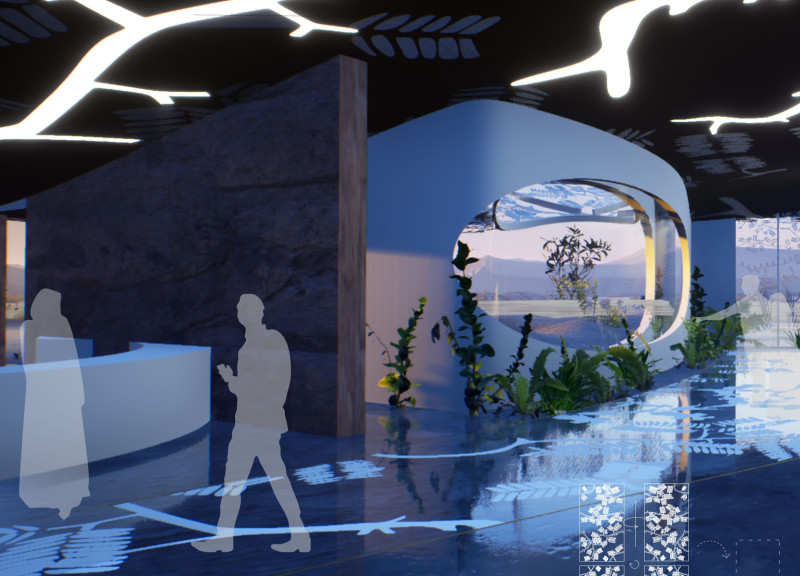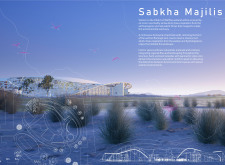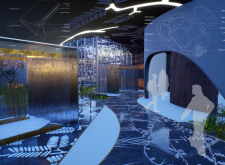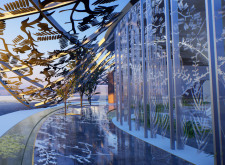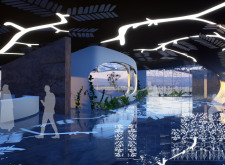5 key facts about this project
The Sabkha Majilis is located in Abu Dhabi's Al Wathba wetland and serves as a gathering place for visitors. The design concept connects people to the surrounding landscape. It draws inspiration from both the area’s natural features and human influences, resulting in a structure that reflects the local environment and culture.
Design Concept
At the heart of the design is the use of rammed earth, which takes cues from the appearance of earthen flamingo nests. This choice promotes a connection between the building and the ecosystem. The roof’s fluid shape mimics natural forces like wind and water. This approach does more than beautify; it addresses practical needs such as ventilation and water runoff.
Materiality and Structure
The materials selected for the project play a key role in its functionality. A reinforced concrete shell provides strength and reliability. Custom trusses and concrete footings are designed to support the structure over time. Cavity insulation contributes to energy efficiency, helping the building maintain comfortable temperatures. Additional features, including suspended metal panels and concrete beams, offer robust support and enhance the facility's longevity.
Interior and Spatial Experience
Inside, the focus shifts to creating spaces that invite interaction with nature. Regional plants are incorporated throughout, blending indoor and outdoor areas. The semi-enclosed verandas allow for stunning views of the wetland, encouraging visitors to become fully engaged with their surroundings. These sheltered spaces serve as quiet retreats for reflection amidst the natural beauty.
Cultural Motifs
The design also includes traditional tile motifs that add cultural significance. These patterns reflect local flora, such as the Ghaf tree and common reed, showcasing the area’s heritage. By integrating these design elements, the structure becomes more than just a building; it tells a story of the environment and the people who inhabit it. The careful attention to detail reinforces its identity as a meaningful part of the Al Wathba wetland landscape.


